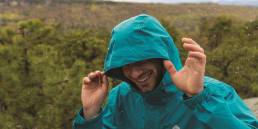The Eastern Mountain Sports Climbing School in North Conway offers a number of different classes and trips over the winter, from ice climbing to backcountry skiing to mountaineering on the Northeast’s highest peak, Mount Washington. While the activities differ, the clothing and gear needed for an EMS winter trip are fairly consistent. Below, Keith Moon, Manager of the EMS Climbing School, details how to put together your winter adventure kit.
Standard White Mountain Winter Adventure Kit
Clothing
Baselayer: Baselayers are the foundation of a winter layering system. Baselayers—both a top and a bottom—go against your skin and work to move moisture away from your body. Baselayers are primarily made of wool, synthetic material, or some combination of the two. Both fabric types have their pros and cons, and involve a fair bit of personal preference—choose the one that works best for you.
Midlayer: Normally worn over a baselayer, the purpose of a midlayer is to keep you warm. The two most common upper-body midlayers are lightweight puffies and midweight fleeces. Puffies pack better than fleeces, making them the preferred choice for rigorous activities—like ski touring or mountaineering—that may have them riding in the pack for part of the day. Midweight fleeces, like the EMS Equinox Stretch Ascent Full-Zip Hoodie (men’s/women’s), typically breathe better, layer nicer, and feel cozier, making them well-suited for activities where you’re not generating as much body heat, such as ice climbing.
Hardshell Jacket: A hardshell jacket is waterproof and windproof, making it a key piece of winter kit, perfect for skiing in a snowstorm, crossing a gusty ridgeline, or ascending a dripping icicle.
Outerlayer Pants: Hardshell and softshell pants are both popular options for winter adventures. As mentioned above, hardshells provide maximum protection against water and wind. Softshells provide less protection from the elements—they’re normally water- and wind-resistant—but typically breathe better and are more comfortable to wear than their hardshell counterparts.
Puffy Coat: The primary purpose of a puffy is to keep you warm—it’s used for everything from staying warm and stoked during snack breaks to fighting off frigid temps while taking summit selfies. A puffy is most commonly worn on top of all your other layers.
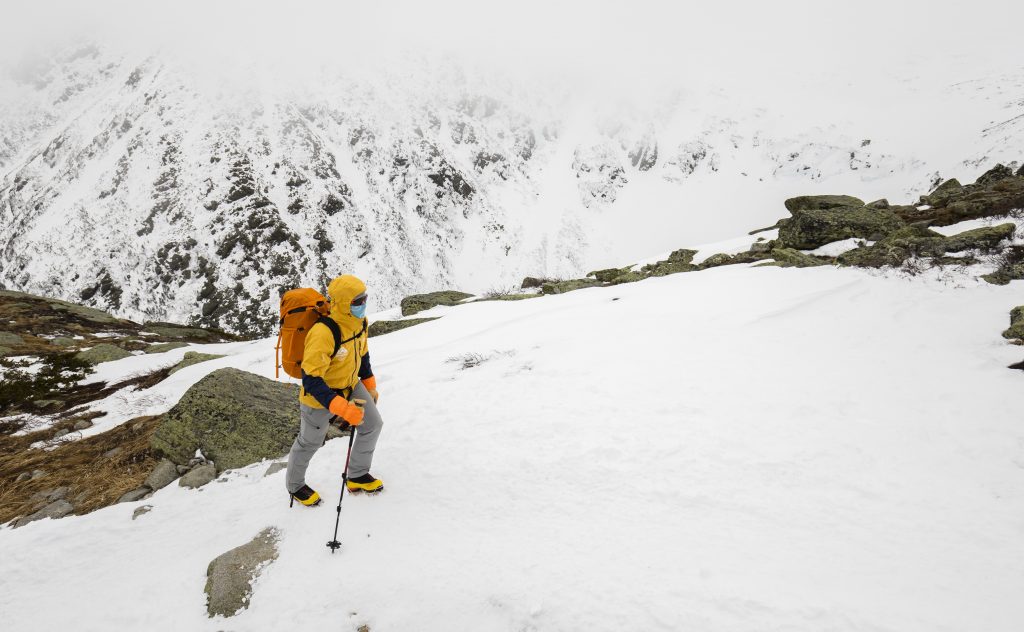
Accessories
Winter Hat: A winter hat is key for keeping your head warm. Both wool and synthetic hats work, just make sure that they fit well under your ski or climbing helmet.
Buff: Also known as neck gaiters, buffs help keep your face and neck warm. An added bonus—you can pull one up around your face for additional protection when the wind picks up.
Gloves: EMS Guides pack as many as four pairs of gloves depending on the weather and activity. At a minimum, your winter adventure kit should include two pairs of gloves: a lightweight pair and a heavyweight pair. The light gloves provide dexterity and the heavyweight gloves deliver warmth. Those with cold digits should consider mittens instead of heavyweight gloves.
Socks: A good pair of socks will help keep your feet dry and warm. Wool, synthetic, or some combination of the two are all great options. Just remember, no cotton!
Gaiters: Gaiters provide a variety of protections. They protect expensive pants from pointy crampons and sharp ski edges and help prevent snow from sneaking into the top of your boots. They also offer extra warmth, something that’s extra appreciated on cold winter days.
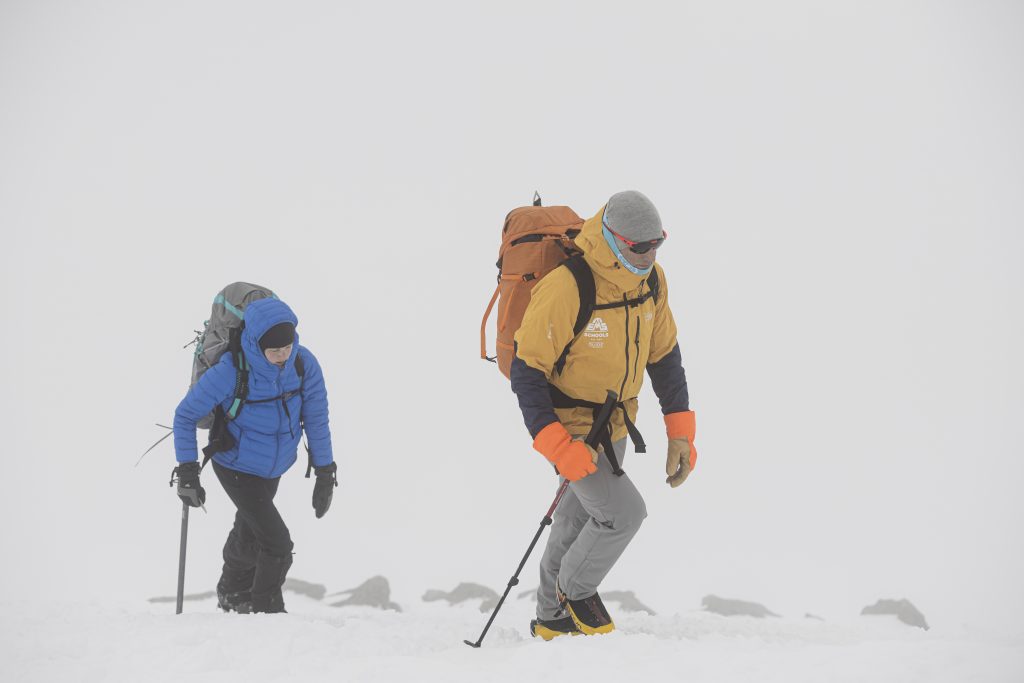
Food and Water
Bottles: Depending on your planned outing, you’ll want to pack one or two liters of water. A wide-mouth Nalgene is a popular option among both guides and clients—just don’t forget an insulator to prevent your water from freezing. Numerous companies make insulated water bottle carriers, but a pair of socks offers a good low-cost solution. Many also choose to carry an insulated bottle filled with a hot beverage like tea or coffee, which can provide a nice pick-me-up on frigid winter days.
Food: Adventures require fuel, so make sure to pack plenty of tasty high-calorie treats. Energy bars and gels work great, but so do “real” foods like sandwiches, pizza, cookies, and trail mix. Whatever you choose to pack for food, make sure it’s something that won’t freeze.
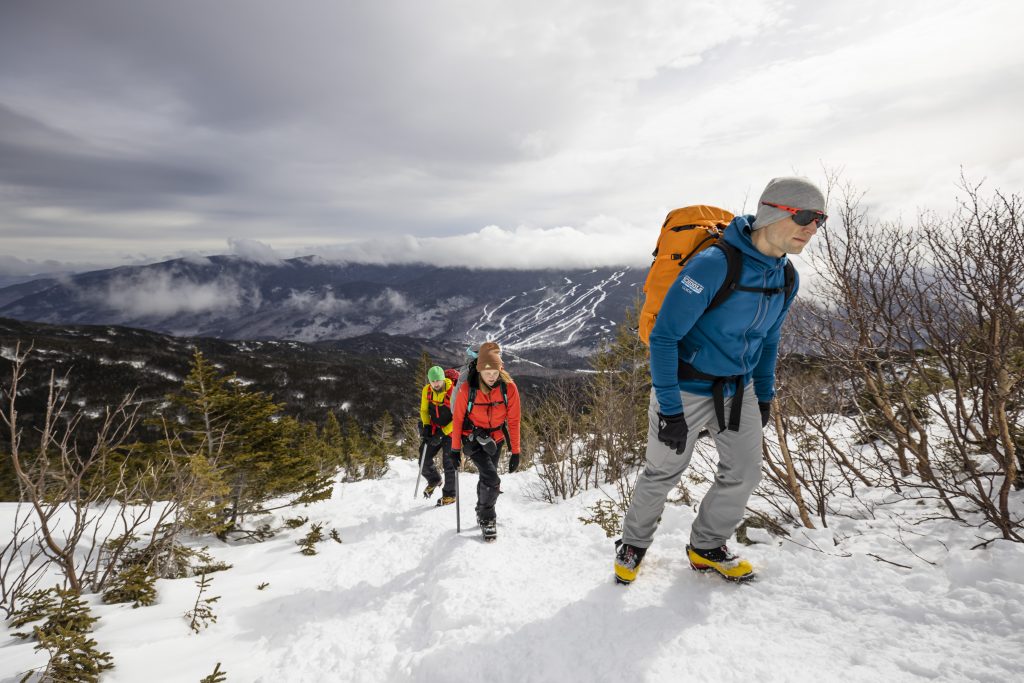
Other Essentials
First-aid: If you’re on a winter adventure with the EMS Climbing School, your guide will carry a full first-aid kit. That said, it’s not a bad idea to pack yourself a small personal first-aid kit containing any medications you take, Ibuprofen, blister care, and band-aids.
Camera/phone: A trip with the EMS Climbing School will likely take you to some Insta-worthy locations and you’ll likely want to capture the moment. Whether it’s standing on the summit of the “Rockpile,” making your first turn in Tuck’s, or sending an impossible-looking ribbon of ice in Crawford Notch, you’ll want to keep a camera or your phone handy to share your adventure and remember the moment.
Bag: Of course, you’ll need something to carry all of this gear. A medium-sized 30- to 40-liter daypack provides enough space for all the essentials while allowing you the mobility you need to scale some of the White Mountains’ most iconic lines.
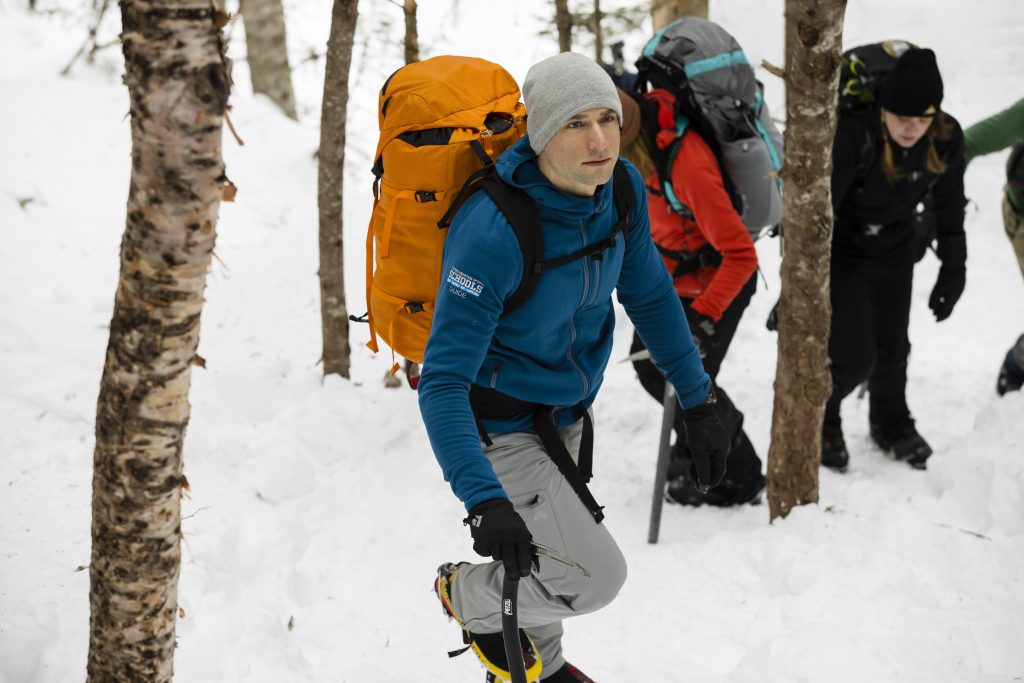
EMS Climbing School
If you’ve signed up for an adventure with EMS Schools and have a question about what to bring for a specific trip, contact them.




